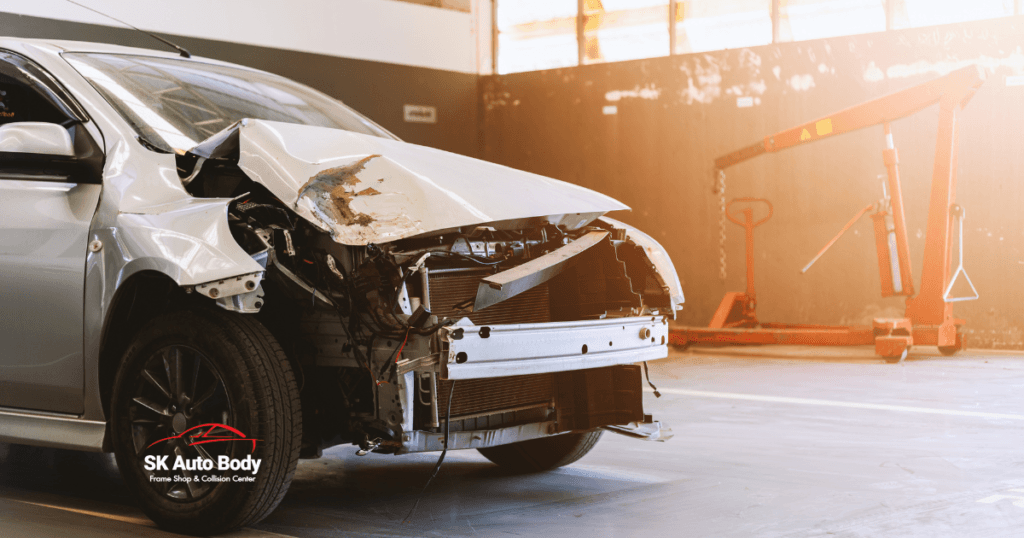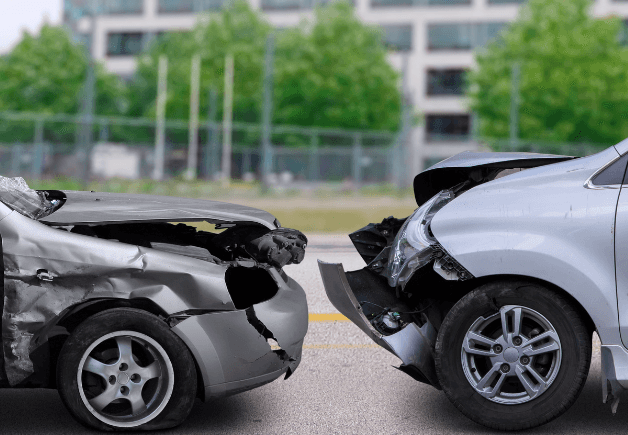When a vehicle is involved in an accident, understanding the type of damage sustained is crucial for determining the appropriate repair process. Car damage is typically classified into two categories: frame damage and cosmetic damage. While cosmetic damage affects the outer appearance, frame damage compromises structural integrity. Knowing the difference between these two types of damage can help in making informed decisions about repairs and maintaining long-term safety and performance.

What is Frame Damage?
Frame damage refers to any structural damage to the vehicle’s underlying chassis or unibody construction. The frame provides support and ensures proper alignment. When damaged, it can affect everything from handling to crash safety performance. Frame damage can occur due to high-impact collisions, curb hits, or improper towing practices.
Some common signs of frame damage include:
- Misaligned doors and windows: If doors and windows no longer close properly, it could indicate structural misalignment.
- Uneven tire wear: A damaged frame can lead to improper wheel alignment, causing premature tire wear.
- Steering issues: A car that pulls to one side despite a straight steering wheel may have underlying frame damage.
- Visible bending or twisting: Obvious deformities in the chassis or undercarriage can be a telltale sign of significant frame issues.
Repairing frame damage requires specialized equipment and expertise. Professional services use state-of-the-art technology to measure and restore the vehicle’s frame to factory specifications, ensuring optimal performance and safety.
What is Cosmetic Damage?
Cosmetic damage refers to surface-level imperfections that do not affect the vehicle’s structural integrity. This type of damage is typically the result of minor accidents, environmental factors, or everyday wear and tear. While cosmetic issues don’t compromise safety, they can significantly impact appearance and resale value.
Common types of cosmetic damage include:
- Dents and dings: Often caused by hail, parking lot mishaps, or minor fender benders.
- Scratches and paint chips: Resulting from road debris, vandalism, or contact with rough surfaces.
- Faded or peeling paint: Due to prolonged exposure to sunlight, harsh weather conditions, or improper maintenance.
These types of repairs usually require body repair services and a paint touch-up, both of which can quickly restore visual appeal. Whether it’s dent removal, scratch repair, or a full respray, skilled technicians ensure the vehicle looks as good as new.
Assessing Vehicle Damage
Determining whether a car has frame or cosmetic damage isn’t always easy. While cosmetic damage is often visible to the naked eye, frame damage can be more subtle and require professional inspection. Trained specialists use advanced diagnostic tools to assess the extent of the damage and recommend the best repair solutions.
If the damage is primarily surface-level, a quick touch-up or panel replacement may suffice. However, if there are underlying structural issues, more extensive frame repairs will be necessary to ensure the car remains safe to drive.
How Frame Damage Affects a Vehicle
Unlike cosmetic damage, frame damage can have serious consequences if left unaddressed. A damaged frame can compromise the structural integrity of a vehicle, making it less effective in protecting passengers during an accident. It can also lead to uneven weight distribution, causing additional strain on suspension components and leading to costly repairs.
If a vehicle has been in a major collision, it’s essential to have it inspected for hidden frame damage. Comprehensive frame work services can detect and repair structural issues, ensuring the vehicle remains roadworthy and safe.
How Cosmetic Damage Affects a Vehicle
While cosmetic damage doesn’t impact safety, it can reduce aesthetic appeal and resale value. A car with visible scratches, dents, or faded paint can leave a negative impression on potential buyers. Additionally, untreated paint damage can lead to rust and corrosion over time, further deteriorating the vehicle’s condition.
Investing in timely body repair services can prevent minor cosmetic issues from escalating into more significant problems. High-quality paint matching and precision repairs help restore the vehicle’s original appearance.
Repairing Frame Damage: What to Expect
Frame damage repair is a complex process that requires specialized tools and expertise. The process typically includes:
- Initial Inspection: Advanced diagnostic tools are used to measure the extent of the damage and determine the necessary repairs.
- Frame Straightening: Specialized equipment is used to realign the frame to factory specifications.
- Structural Reinforcement: Damaged sections may require welding or reinforcement to restore strength.
- Final Testing: A thorough inspection ensures that the repair meets safety standards and that the vehicle is properly aligned.
Frame work services guarantee precision repairs that restore strength and performance.
Repairing Cosmetic Damage: Quick and Effective Solutions
Addressing cosmetic damage involves different techniques depending on the severity of the issue. Some common solutions include:
- Paintless Dent Repair (PDR): A non-invasive method used to remove small dents without the need for repainting.
- Scratch Removal and Buffing: Specialized compounds and techniques are used to restore the surface finish.
- Panel Replacement: When damage is beyond repair, replacing the affected panel ensures a flawless look.
If a vehicle has suffered cosmetic damage, expert body repair services provide fast and cost-effective solutions to keep it looking its best.
When to Consider Part Replacement
In some cases, damage may be too extensive for traditional repair methods, necessitating part replacement. Situations where replacement is a better option include:
- Severe frame damage that compromises safety.
- Cosmetic damage that affects critical components like headlights or bumpers.
- Rust or corrosion that has weakened the structural integrity of the affected area.
Quality replacement parts help restore the vehicle to its original condition.
Choosing the Right Auto Body Shop
Whether a vehicle has sustained frame or cosmetic damage, choosing a reliable auto body shop is crucial. Look for experienced technicians, modern equipment, and a commitment to quality workmanship. Professional frame work, body repair, and part replacement services ensure the vehicle is restored to its pre-damage condition.
Conclusion
Understanding the difference between frame damage and cosmetic damage can help make informed decisions when it comes to repairs. While cosmetic damage primarily affects appearance, frame damage can have serious implications for safety and performance. Whether a car needs minor touch-ups or extensive structural repairs, comprehensive repair services ensure it is safe, functional, and visually appealing.
Address vehicle damage promptly by consulting with experts who can restore the car to its best condition.


